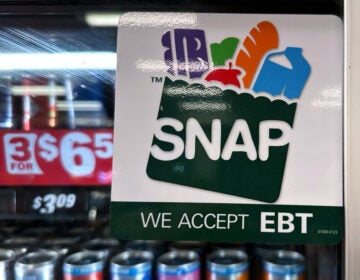N.J. unemployment rate rises for fifth straight month
With New Jersey’s unemployment rate rising to a new 35-year high of 9.9 percent, the Christie administration yesterday took aim at the methodology used to determine the rate, saying there is clearly something awry with the nationwide household survey used to come up with the numbers.
Charles Steindel, the Treasury Department’s chief economist, said the increase in New Jersey’s jobless rate from 9.0 percent to 9.9 percent over the past five months is contradicted by employer surveys showing a gain of 50,000 jobs over the past year. Administration officials noted that New York City Mayor Michael Bloomberg and Connecticut labor officials also have questioned the validity of the unemployment rate calculations.
But Senate President Stephen Sweeney (D-Gloucester) was skeptical of the Christie administration’s claims.
“This feels like Groundhog Day,” Sweeney said. “Every month we have to hear the same bad news, followed by the same inevitable spin from this administration trying to hide why it is so completely inept at getting people back to work.”
Healthy Growth
Gov. Chris Christie and administration officials insisted that the state is enjoying healthy job growth, despite yesterday’s announcement that the jobless rate rose from 9.8 percent in July to 9.9 percent in August, while the national unemployment rate dropped from 8.2 percent to 8.1 percent
The Republican governor said that his administration has added 86,200 jobs since he took office in January 2010, making up one third of the jobs lost under his predecessor, Democratic Gov. Jon Corzine, during the 19-month recession that ended in June 2009.
“Keep the big picture in mind,” Christie spokesman Kevin Roberts urged. “New Jersey added 5,300 total jobs in August, giving New Jersey positive job growth in 10 of the last 12 months. “
Steindel said it’s “nuts” to believe that unemployment has been going up in New Jersey. “We’re not seeing unemployment claims shoot up like we did at the beginning of the recession,” he said in a conference call with reporters.
Steindel noted that the unemployment rate announced by the U.S. Bureau of Labor Statistics is based on national surveys of 60,000 households conducted by the U.S. Census Bureau. He questioned the validity of determining unemployment rates on the basis of 1,200 to 1,500 interviews of New Jersey households, although that number is considered a more than adequate sample size for political polls.
Like Sweeney, Assembly Speaker Sheila Oliver (D-Essex) shrugged off the Christie administration’s insistence that New Jersey’s employment picture is improving.
“The fact that we’re very nearly at 10 percent unemployment is extremely disappointing news, especially for New Jersey’s middle-class and poor still desperately seeking work,” said Assembly Speaker Sheila Oliver (D-Essex). “It’s good to see jobs being added, but it’s obviously nowhere near enough. New Jersey is almost two points higher than the national unemployment average.”
For Christie, the announcement that the jobless rate had inched up from 9.8 percent to 9.9 percent capped a tumultuous week in which three ratings agencies expressed concerns about the state’s fiscal stability; his Treasury Department acknowledged that state revenues are coming in $100 million short; and Roche Pharmaceuticals decided to locate its new clinical research facility in New York instead of New Jersey.
Gordon MacInnes, president of New Jersey Policy Perspective, a liberal think tank, seized upon the unemployment numbers and the Roche decision to question the wisdom of the dueling tax cut strategies pushed by Christie and by legislative leaders from both parties in the name of job creation.
“The increase in New Jersey’s unemployment rate to 9.9 percent comes the day after New Jersey lost out to New York City for the location of 234 high-value pharmaceutical research jobs,” said MacInnes. “These are the kind of jobs we need to capture if we are to put the state on the path to prosperity.”
“Here’s what we can be sure of: Roche didn’t pick NYC because of its low tax rates, he added. “Yet, both the governor and legislative leadership are obsessed with tax cuts as the only response to high unemployment.
“Instead, they should follow the priorities of the billionaire mayor of New York who obsesses with creating the infrastructure and culture to attract research, engineering, and software jobs.” MacInnes said, referring to New York City Mayor Michael Bloomberg. “So far, he’s winning.”
Led by a resurgent New York City, New York State has not only regained all of the jobs it lost during the Great Recession that started in December 2007 and ended in June 2009, but has added 33,100 new jobs as of May, according to a study by the State Budget Crisis Task Force, a blue-ribbon panel of economists cochaired by former Federal Reserve Chairman Paul Volcker, and former New York Lieutenant Governor Richard Ravitch.
A Jobless Recovery
That has not been the case everywhere in what has been called the nation’s first “jobless recovery.” Nationwide, only half of the jobs lost during the Great Recession have been regained; California alone had yet to regain more than 900,000 jobs lost during the recession as of May.
While Christie took credit yesterday for New Jersey regaining one third of the 250,000 jobs lost during the recession, MacInnes questioned whether that was really an accomplishment.
“The latest jobs numbers for New Jersey merely reaffirm the basic fact that we’ve known for months: we are recovering from the Great Recession much more slowly than the rest of the nation,” MacInnes said.
Steindel, however, expressed confidence that New Jersey’s unemployment rate would ultimately be adjusted downward, as July’s job loss estimates were. July’s jobs’ figure, which is based on employer surveys, was revised downward from an initial estimate of a loss of 12,000 jobs to 7,300 jobs lost.
“As was the case for March, the initial report of a very marked drop in jobs in July proved to be overstated, and after the one-month interruption, job growth in New Jersey in August returned to the steady positive pace of the last year,” Steindel maintained.
NJ Spotlight managing editor Lee Keough contributed to this report.
WHYY is your source for fact-based, in-depth journalism and information. As a nonprofit organization, we rely on financial support from readers like you. Please give today.




